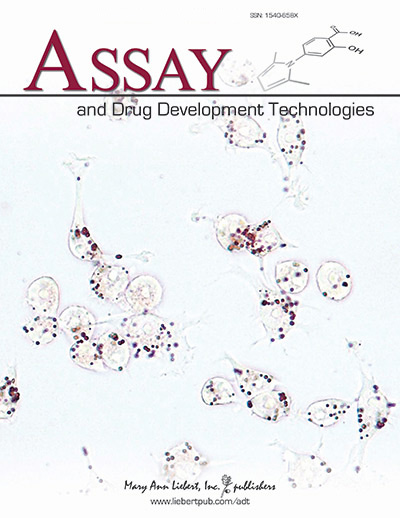Special Issue Series Focusing on
Chemical and Pharmacological Tools
Guest Editors
Milka Kostic
Dana-Farber Cancer Institute
Bruce J. Melancon, PhD
Vanderbilt University School of Medicine
Pharmacological and chemical probes are foundational tools for asking basic biological and translational questions. They complement genetic strategies, such as CRISPR and RNA interference technologies. Together, these strategies enable biologist and clinician scientist to advance biomedical research and accelerate discovery of the next generation of therapeutics.
This special issue series has been developed to integrate different scientific areas that play a critical role in designing, developing, validating and applying pharmacological and chemical tools. We invite submission of review and research articles that generate, characterize and/or validate pharmacological and chemical tools, as well as develop technologies and methods to accelerate key steps in any of these efforts. Reports that describe new biological context in which previously reported probes can be used will also be considered. Importantly, studies that describe limitations or invalidation of previously reported tools, are also encouraged.
We also encourage submission of review content (Review Articles, Opinions and Commentaries) that comment on standards in the field, promote rigor and reproducibility, and discusses accessibility and sharing of high-quality pharmacological and chemical probes. Community-enorsed white papers that advise on these issues are especially welcomed.
The following special issues are planned in this series and submissions are now being solicited for all of them:
- High-throughput Technologies for Discovery and Development of Chemical Probes and Pharmacological Tools
- Chemical Probes and Pharmacological Tools for Kinase Signaling
- New modalities in Chemical Probes and Pharmacological Tools in Drug Discovery
- Chemical Probes and Pharmacological Tools for Imaging Applications
We are committed to featuring diverse range of topics as well as authors. Therefore, we would especially like to encourage early career scientists to submit their work for consideration. We are committed to rapid and fair evaluation of submitted work, and for this special issue series our focus will be on rigor and reproducibility of science, and accuracy or reporting rather than on novelty and significance of the findings.
Brief description of each topic and list of potential front matter contributors:
- High-throughput Technologies for Discovery and Development of Chemical Probes and Pharmacological Tools
This special issue focuses on emerging high-throughput technologies that are critical for rapid, reiable and reproducible discovery and/or validation of chemical probes and pharmacological tools (inhibitors, agonists, antagonists, degraders (PROTACs and molecule glue compounds, natural products, and similar).
Some of the assays and technologies of interest include: (a) phenotypic, fragment-based or targeted-based screening for small molecule ligand discovery; (b) high-throughput biochemical/biophysical.cell-based methods that accelerate probe characterization; (c) chemoproteomic and proteomic methods for probe discovery and validation; (d) computer-based methods if supported by extensive wet-lab follow up. We are also interested in strategies for screening library design and development, as well as advanced assays for target validation.
- Chemical Probes and Pharmacological Tools for Kinase Signaling
This special issue focuses on chemical probes and pharmacological tools (CPPT) that target kinases. We encourage reports of kinase-targeted inhibitor and degrader molecules development and validation, studies of SAR for novel and existing kinase pharmacological tools, work that invalidates previously reported tool or describes new insights into systems and conditions that need to be taken into account development of assays to characterize small molecules across the kinome, both those aimed at selectivity profiling as well as those that measure proteomic/signaling effects of kinase inhibition. Moreover, studies that address questions related to polyphramcological effects, especially when accompanied by method and assay development work are also of interest. Work on non-human kinases (such as microbial kinases) would also be considered if addresses an important aspect of kinase CPPT development and validation.
- New Modalities in Chemical Probes and Pharmacological Tools in Drug Discovery
This special issue focuses on reporting on novel types of chemical probes and chemical tools, including but not limited to pharmacological modulators regardless of mechanism of action (inhibitors, activators, degraders, etc.), fluorescent probes, crosslinking probes and reagents, probes for activity-based profiling, chemoproteomic probes, etc. The focus is on reports that directly provide evidence for how these tools advance drug discovery and/or how they can be integrated into drug discovery pipelines. Reports that describe assays for mechanistic, structural, biochemical, biophysical, proteomic, pharmacological or other type of characterization of these tools are also encouraged. In the context of this special issue we are also interested in drug repurposing, as well as invalidation studies, both from a perspective of tool compounds and their targets. Learn More
- Chemical Probes and Pharmacological Tools for Imaging Applications
This special issue focuses on reporting CPPTs for imaging applications, including but not limited to: (a) assay development based on fluorescent probes and tools; (b) probes for clinically relevant imaging (e.g. PET imaging); (c) visualization probes for cell biology; (d) high-content imaging screening and method development; (e) live cell and whole animal imaging assays, and similar. The issue will highlight best practices for developing, validating and applyting this subset of CPPTs, and provide an opportunity to discuss factors that effect their performance, especially as it pertains to their clinical use and informing drug discovery. Learn More
